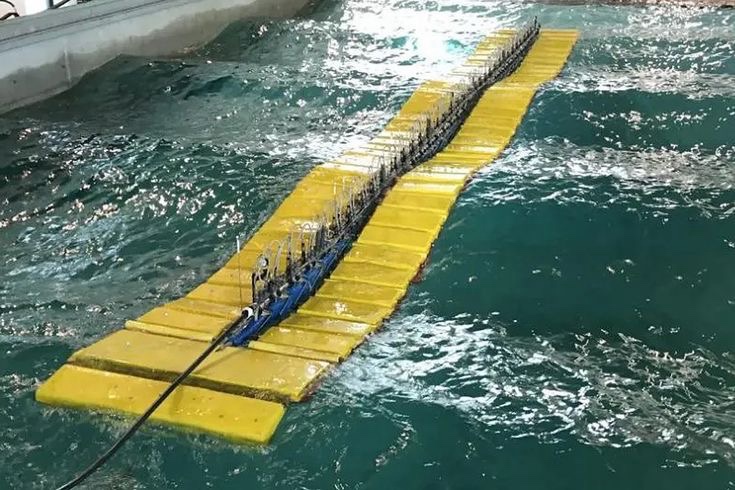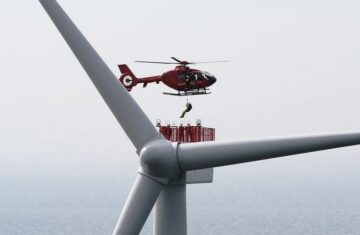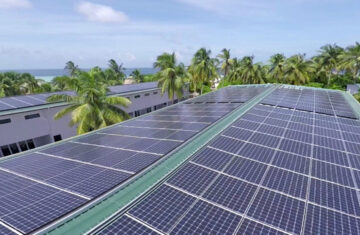Harnessing the Power of the Tides and Waves: The Emergence of Marine Energy in the United States
The Potential of Marine Energy
As the world seeks to transition to renewable and sustainable energy sources, the untapped potential of marine energy has garnered increasing attention in the United States. Marine energy, which encompasses the extraction of energy from the ocean’s tides, waves, and currents, offers a promising solution to the growing demand for clean and reliable power.
The U.S. Marine Energy Landscape
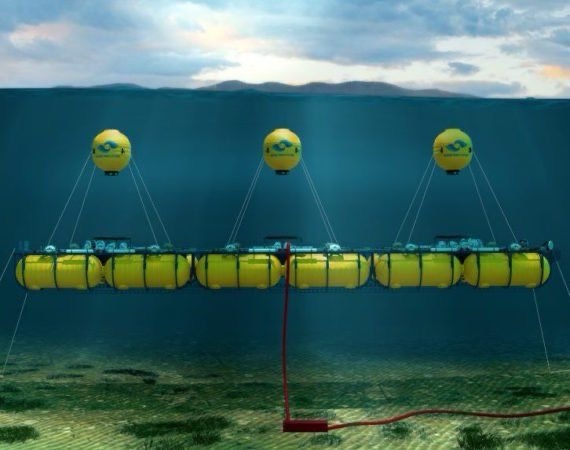
The United States has a vast and diverse coastline, stretching over 95,000 miles, which presents a significant opportunity for the development of marine energy technologies. According to the U.S. Department of Energy (DOE), the total technical resource potential for wave energy along the U.S. coastline is estimated to be over 2,300 terawatt-hours (TWh) per year, while the total technical resource potential for tidal energy is estimated to be over 2,100 TWh per year.
Tidal Energy Potential in the U.S.
The U.S. has several regions with significant tidal energy potential, particularly in areas with strong tidal currents, such as the Aleutian Islands in Alaska, the Puget Sound in Washington, and the Gulf of Maine. The DOE’s Marine and Hydrokinetic (MHK) Technology Database identifies over 50 potential tidal energy project sites in the United States, with a total estimated capacity of more than 3.6 gigawatts (GW).
Wave Energy Potential in the U.S.
The wave energy potential in the U.S. is primarily concentrated along the West Coast, the Pacific Northwest, and Alaska. The DOE’s Ibid. Technology Database estimates that the wave energy resource potential in these regions could exceed 900 GW, with particularly high potential along the coasts of Oregon, Washington, and California.
Technological Advancements in Marine Energy

The marine energy industry in the United States has experienced significant technological advancements in recent years, paving the way for the commercialization and widespread deployment of these renewable energy technologies.
Tidal Energy Conversion Technologies
Tidal energy conversion technologies, such as tidal turbines and tidal barrages, have undergone significant development and refinement. These technologies harness the kinetic energy of tidal currents to generate electricity, with recent advancements focusing on improving efficiency, reliability, and cost-effectiveness. Notable examples of tidal energy projects in the U.S. include the Reedsport Wave Park in Oregon and the East River Tidal Energy Project in New York.
Wave Energy Conversion Technologies
The development of wave energy conversion technologies has also progressed rapidly in the U.S., with a range of devices being tested and deployed, including oscillating water columns, point absorbers, and overtopping devices. These technologies capture the energy of ocean waves and convert it into electricity, with ongoing research and development aimed at enhancing performance and reducing costs.
Floating Offshore Wind Platforms
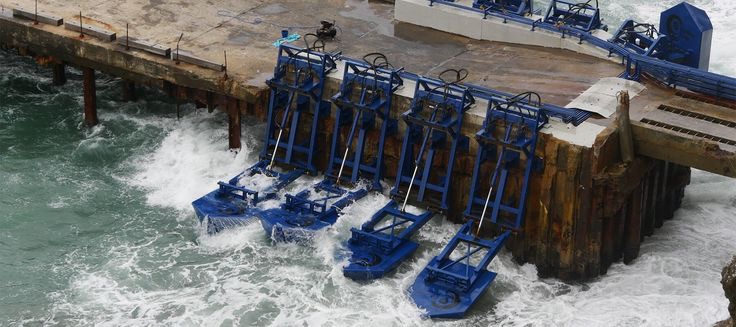
The marine energy sector in the U.S. has also seen the emergence of floating offshore wind platforms, which leverage the strong and consistent winds found offshore to generate electricity. These platforms can be installed in deeper water areas, where traditional bottom-fixed wind turbines are not feasible, further expanding the potential for renewable energy generation along the coasts.
Environmental and Economic Benefits of Marine Energy
The development of marine energy in the United States offers a range of environmental and economic benefits that contribute to the country’s transition towards a more sustainable energy future.
Reduced Greenhouse Gas Emissions
One of the primary advantages of marine energy is its low carbon footprint. According to the DOE, the life-cycle greenhouse gas emissions from marine energy technologies are significantly lower than those of fossil fuel-based power generation, making them a crucial component of the clean energy transition.
Job Creation and Economic Development
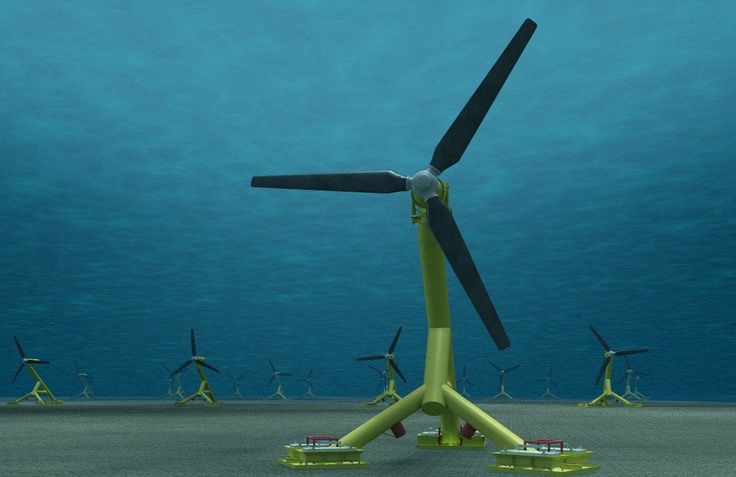
The marine energy industry has the potential to create thousands of new jobs in the United States, particularly in coastal and rural communities where these resources are abundant. The DOE estimates that the development of just 1 GW of wave energy capacity could support over 16,000 jobs, while the development of 1 GW of tidal energy capacity could support over 11,000 jobs.
Diversification of the Energy Portfolio
The integration of marine energy into the U.S. energy mix can help diversify the country’s electricity generation portfolio, reducing reliance on fossil fuels and enhancing the resilience and reliability of the energy system as a whole.
Challenges and Barriers to Marine Energy Development
While the potential of marine energy in the United States is substantial, the industry also faces a range of challenges and barriers that must be addressed to achieve widespread adoption and commercial viability.
Technological Maturity and Cost Competitiveness
One of the key challenges facing the marine energy industry is the need to achieve cost parity with other renewable energy technologies, such as wind and solar. The capital-intensive nature of marine energy projects, combined with the technological complexity involved, has resulted in higher upfront costs that can hinder widespread deployment.
Environmental and Regulatory Considerations
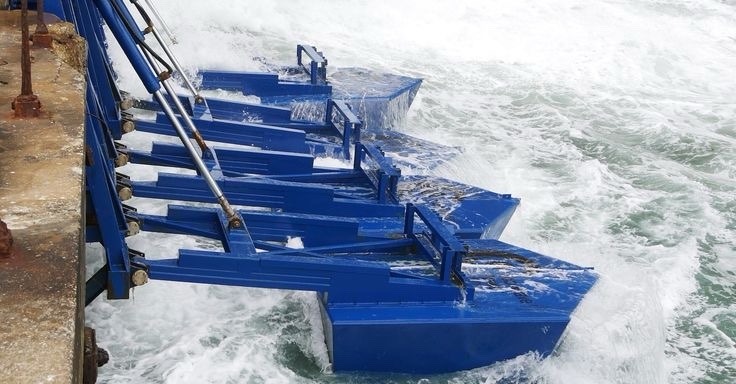
The development of marine energy projects must also navigate a complex regulatory landscape, with environmental concerns, such as impacts on marine ecosystems and habitats, playing a significant role. Addressing these environmental considerations and obtaining the necessary permits and approvals can be a lengthy and resource-intensive process.
Grid Integration and Infrastructure Challenges
Integrating marine energy into the existing electrical grid also presents a significant challenge, as the intermittent and location-specific nature of these resources can require substantial infrastructure investments and grid modernization efforts.
The Future of Marine Energy in the U.S.
Despite the challenges, the future of marine energy in the United States appears increasingly promising, with growing support from policymakers, industry stakeholders, and the research community.
Policy and Regulatory Support
The federal government has recognized the importance of marine energy and has taken steps to support its development. The DOE’s Water Power Technologies Office (WPTO) has invested hundreds of millions of dollars in research, development, and demonstration projects aimed at advancing marine energy technologies and overcoming key barriers.
Increased Investment and Collaboration

The marine energy industry in the U.S. has also seen a rise in private investment and collaboration between various stakeholders, including technology developers, utilities, and research institutions. This increased funding and cooperation is helping to drive innovation, reduce costs, and accelerate the commercialization of marine energy technologies.
Emerging Markets and Applications
As the marine energy industry matures, new markets and applications are emerging, such as the use of wave and tidal energy to power remote coastal communities, desalination plants, and offshore energy facilities. These diverse applications can help expand the reach and impact of marine energy in the U.S.
Conclusion
The development of marine energy in the United States holds immense promise as the country seeks to transition towards a more sustainable and diversified energy future. With continued technological advancements, supportive policies, and collaborative efforts, the marine energy industry can unlock the vast potential of the country’s coastal resources and play a vital role in shaping a cleaner, more resilient energy landscape.
